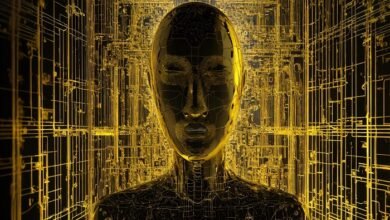A Comprehensive Guide to Face Detection: The Technology and Its Applications

Face detection technology has become an integral part of many modern applications, from security systems to social media platforms. By accurately identifying and locating human faces in images or video, face detection provides a range of functionalities that enhance user experiences and improve security measures. Understanding how face detection works, its various applications, and the challenges associated with it is crucial for leveraging its full potential. This guide will provide a comprehensive overview of face detection, including its key features, benefits, and future directions.
1. What is Face Detection?
Face detection refers to the technology used to identify and locate human faces within digital images or video streams. Unlike facial recognition, which identifies and verifies individual identities, face detection simply locates where faces appear in an image. The process involves detecting the presence of faces and marking their positions, which can then be used for further analysis or processing. Face detection is a fundamental component of many applications, enabling systems to focus on human faces for various purposes.
2. How Does Face Detection Work?
Face detection works through a series of complex algorithms and machine learning models. The process typically involves the following steps:
- Image Preprocessing: The image is prepared by converting it to grayscale or adjusting its contrast to enhance the detection process.
- Face Detection Algorithm: Algorithms like Haar cascades, Histogram of Oriented Gradients (HOG), or Convolutional Neural Networks (CNNs) are used to detect faces.
- Feature Extraction: Key facial features such as eyes, nose, and mouth are identified to confirm the presence of a face.
- Bounding Box: The detected faces are marked with bounding boxes, indicating their locations in the image.
These steps work together to accurately identify and locate faces within an image or video stream.
3. Key Algorithms in Face Detection
Several algorithms are commonly used in face detection, each with its own strengths and applications:
- Haar Cascades: This classical method uses a series of classifiers to detect faces based on specific features. It is known for its simplicity and speed but may be less accurate in complex scenarios.
- Histogram of Oriented Gradients (HOG): HOG features capture edge information in images and are used in combination with Support Vector Machines (SVMs) to detect faces. This method is effective for detecting faces in various orientations.
- Convolutional Neural Networks (CNNs): CNNs are deep learning models that automatically learn and detect facial features from large datasets. They offer high accuracy and robustness in diverse conditions.
These algorithms form the basis of modern face detection systems, each contributing to different aspects of accuracy and efficiency.
4. Applications of Face Detection
Face detection technology has a wide range of applications across various fields:
- Security and Surveillance: Used in security cameras and access control systems to monitor and verify individuals.
- Social Media: Helps in automatically tagging people in photos and applying face filters.
- Healthcare: Assists in monitoring patients’ facial expressions for emotional or physical health indicators.
- Retail: Enhances customer experiences by analyzing facial expressions and demographics for personalized marketing.
These applications demonstrate the versatility and impact of face detection technology in everyday life.
5. Benefits of Face Detection Technology
The benefits of face detection technology are significant and varied:
- Enhanced Security: Face detection improves security measures by providing accurate and real-time monitoring of individuals.
- User Convenience: Automated tagging and filtering features simplify social media interactions and enhance user experiences.
- Improved Analytics: In retail and healthcare, face detection provides valuable insights into customer behavior and patient health.
- Efficiency: Automated face detection processes reduce the need for manual intervention, saving time and resources.
These benefits highlight how face detection technology can enhance various aspects of both personal and professional environments.
6. Challenges in Face Detection
Despite its advantages, face detection technology faces several challenges:
- Accuracy: Variations in lighting, pose, and facial expressions can affect detection accuracy.
- Privacy Concerns: The use of face detection raises privacy issues, especially in surveillance and data collection scenarios.
- Bias and Fairness: Algorithms may exhibit biases based on demographic factors, leading to unequal performance across different groups.
- Computational Resources: Advanced face detection methods, such as CNNs, require significant computational power and resources.
Addressing these challenges is crucial for improving the effectiveness and ethical use of face detection technology.
7. The Role of Machine Learning in Face Detection
Machine learning plays a crucial role in advancing face detection technology. By training models on large datasets of facial images, machine learning algorithms can learn to recognize and locate faces with high accuracy. Techniques such as supervised learning, where models are trained on labeled data, and unsupervised learning, where models identify patterns without explicit labels, are commonly used. The continuous improvement of machine learning models enhances the performance and reliability of face detection systems.
8. Face Detection vs. Facial Recognition
While face detection and facial recognition are related, they serve different purposes:
- Face Detection: Identifies and locates faces within an image without determining individual identities. It is the initial step in many facial analysis processes.
- Facial Recognition: Involves identifying and verifying individuals based on their facial features. It uses face detection as a preliminary step to match faces against a database.
Understanding the distinction between face detection and facial recognition is important for selecting the appropriate technology for specific applications.
9. Future Trends in Face Detection
The future of face detection technology is promising, with several emerging trends:
- Improved Algorithms: Continued advancements in algorithms, including the use of deep learning techniques, will enhance accuracy and robustness.
- Integration with Other Technologies: Face detection will increasingly be integrated with technologies such as augmented reality (AR) and virtual reality (VR) for immersive experiences.
- Ethical and Privacy Considerations: There will be a growing focus on addressing ethical and privacy concerns, including developing regulations and guidelines for responsible use.
These trends indicate a continued evolution of face detection technology, offering new possibilities and addressing current challenges.
10. Getting Started with Face Detection Technology
If you’re interested in working with face detection technology, consider the following steps:
- Explore Tools and Libraries: Familiarize yourself with popular face detection libraries and tools, such as OpenCV, Dlib, and Face_recognition.
- Learn the Basics: Gain a foundational understanding of algorithms and techniques used in face detection.
- Experiment with Projects: Start with simple projects to apply face detection technology and build your skills.
- Stay Updated: Keep up with the latest developments and research in face detection to stay informed about new advancements and best practices.
These steps will help you get started with face detection technology and leverage its capabilities effectively.
Conclusion
Face detection technology has become a pivotal component in various applications, from enhancing security to improving user experiences in social media. By understanding how face detection works, its benefits, challenges, and future trends, you can better appreciate its impact and potential. As technology continues to evolve, face detection will likely see further advancements and integration with emerging technologies. Staying informed and engaged with the latest developments will ensure you can make the most of face detection technology and address its associated challenges responsibly.
FAQ
1. What is the main difference between face detection and facial recognition?
Face detection identifies and locates faces in an image, while facial recognition involves identifying and verifying individuals based on their facial features.
2. How does face detection technology work?
Face detection technology uses algorithms and machine learning models to locate faces in images by analyzing facial features and patterns.
3. What are some common algorithms used in face detection?
Common algorithms include Haar cascades, Histogram of Oriented Gradients (HOG), and Convolutional Neural Networks (CNNs).
4. What are the main challenges associated with face detection?
Challenges include accuracy issues due to lighting and pose variations, privacy concerns, biases in algorithms, and the need for significant computational resources.
5. How can I get started with face detection technology?
To get started, explore face detection tools and libraries, learn the basics of algorithms, experiment with projects, and stay updated with the latest developments in the field.




